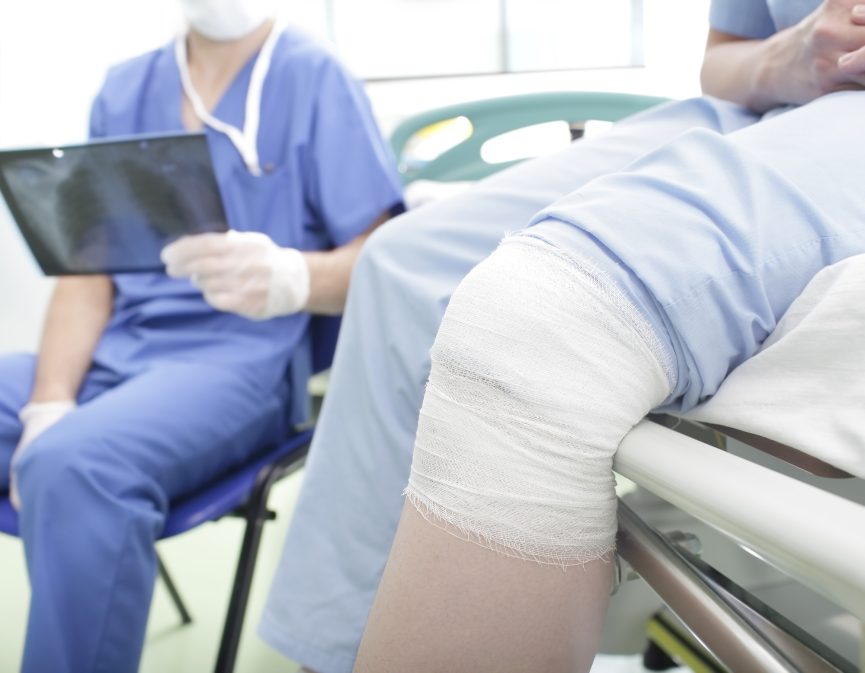Did you know that approximately 20.4% of adults in America have chronic pain? Around 7.4% of adults have chronic pain that limits their daily activity.
Are you one of those individuals that deal with knee pain? Neglecting pain could increase your risk for other health conditions like osteoarthritis. A knee injury is one of the most commonly injured joints and can significantly limit your ability to walk, stand, or move if the pain becomes severe.
Luckily, there are treatment options that can boost your body’s healing process and help you avoid chronic pain or injuries. In our complete guide, we will review different types of knee injuries, common treatments, and why PRP therapy is one of the leading tools for managing your knee pain.
How Do Knee Injuries Occur?
There are two types of injuries: acute and chronic. Acute knee injuries are specific events where a noticeable injury happens, such as twisting your knee wrong during a pick-up basketball game and hearing a pop. After an acute injury, you may have swelling, pain, and loss of function.
Surgery, physical therapy, or rest are common ways people manage an acute injury, depending on the severity. Chronic injuries are more subtle. They are minor, repeated injuries that do not have a specific event you can trace back to.
Tendinitis is an excellent example. Patellar tendinitis, or jumper’s knee, typically occurs from overuse in runners or those who perform repetitive jumping as a sport or hobby. Under repeated stress, the tendon becomes irritated and inflamed.
Can Acute Injuries Lead To Chronic Injuries?
In short: yes. If acute injuries do not properly heal, you are at risk of chronic injuries and knee pain. One of the most common examples is an anterior cruciate ligament (ACL) tear.
The ACL is one of four ligaments in your knee responsible for joint stability. Most ACL tears require reconstruction.
However, researchers found that long-term implications, such as osteoarthritis, increased in patients who were male, older, or had delayed surgery. Osteoarthritis risks were also higher in patients with other knee injuries, such as meniscal or cartilage tears.
Osteoarthritis From Knee Injury
Osteoarthritis is one of the biggest long-term risks of a knee injury. Ligament and cartilage tears can slightly change your knee anatomy or structure and increase strain on the bones and joints.
Knee osteoarthritis accounts for 80% of the global burden of osteoarthritis. It can lead to pain, immobility, loss of strength, and decreased quality of life. Even if your knee injury does not progress to osteoarthritis, you could place added strain on your other knee through compensatory strategies.
And if you think that you have age on your side following a knee injury, you might want to think again. In another study, researchers examined over 5,000 patients with knee injuries who had a mean age of 29.4.
They found that knee osteoarthritis risks following a knee injury increased by sixfold. Those individuals with the highest risks were patients with injuries to the cruciate ligaments or meniscus.
Knee Injury Treatment
What types of treatment for knee injuries are available? Ultimately, you need a treatment that repairs damage and restores function. There is not a one size fits all treatment, and several factors will affect healing, such as:
- Injury severity
- Age
- Co-morbidities
- Chronic vs. acute injuries
- Obesity
- And more
First, if you have knee pain without a known injury, you could try some conservative treatments. These include things like losing excess weight, signing up for a yoga class, or exercising more regularly. Some safe exercises you can review with your physician are swimming or cycling, which tend to put less stress on the knee joint.
Platelet Rich Plasma (PRP) Therapy
PRP therapy has increased in popularity for several acute and chronic injuries, including knee pain treatment. Here is how it works:
- You will meet with a qualified physician to discuss your knee pain treatment options
- If you qualify for PRP therapy, you will have your blood drawn
- Blood is placed in a centrifuge to separate platelets
- Lidocaine is injected into your knee for pain management
- The separated and concentrated platelets are reinjected around or in the knee joint
In most instances, the process takes as little as thirty minutes. The benefit of PRP is that it contains hundreds of growth factors and proteins. When reinjected into specific areas of pain or injury, it breaks down and releases growth factors that spur your body’s natural healing process.
Many people have experienced positive outcomes from this simple technique, including reduced pain and improved function. Since it is a non-surgical treatment option, it is also ideal for individuals who want to try a conservative treatment approach.
Even if your knee injury progressed to osteoarthritis, PRP therapy could still be beneficial. Researchers looked at several individuals with knee osteoarthritis who underwent PRP therapy.
In 60% of cases, using PRP therapy was effective at reducing pain and improving functional outcomes. More severe osteoarthritis reduced effectiveness, making this a more useful tool for knee injuries early on.
Find Solutions For Your Knee Injury
Have you experienced a knee injury in your lifetime? Maybe you recently experienced a sudden acute injury, or you have dealt with knee pain for several months (or years).
Whether you tried conventional solutions like resting, ice, or therapy, you might still have lingering pain. While these approaches are useful, PRP therapy could help you get back on your feet – literally.
At Rejuvenate Your Health, we focus on non-surgical and safe treatments for pain and injuries. Contact us today and schedule your appointment!

